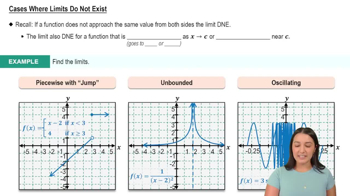62–65. {Use of Tech} Graphing f and f'
b. Compute and graph f'.
f(x) = (x−1) sin^−1 x on [−1,1]
 Verified step by step guidance
Verified step by step guidance Verified video answer for a similar problem:
Verified video answer for a similar problem:



 7:26m
7:26mMaster Derivatives of Inverse Sine & Inverse Cosine with a bite sized video explanation from Patrick
Start learning